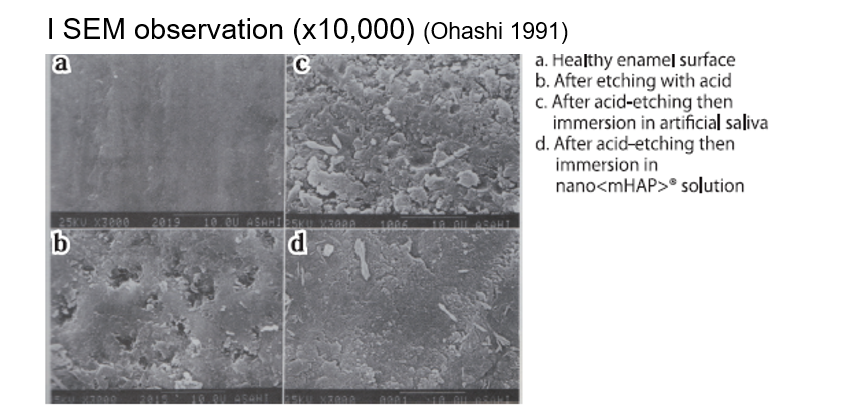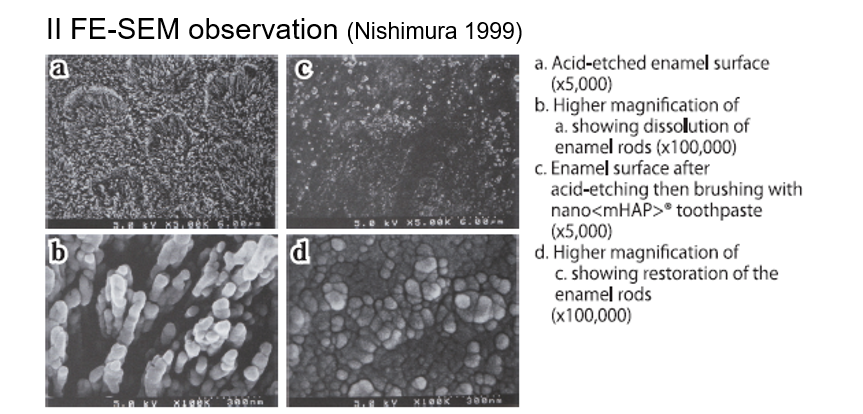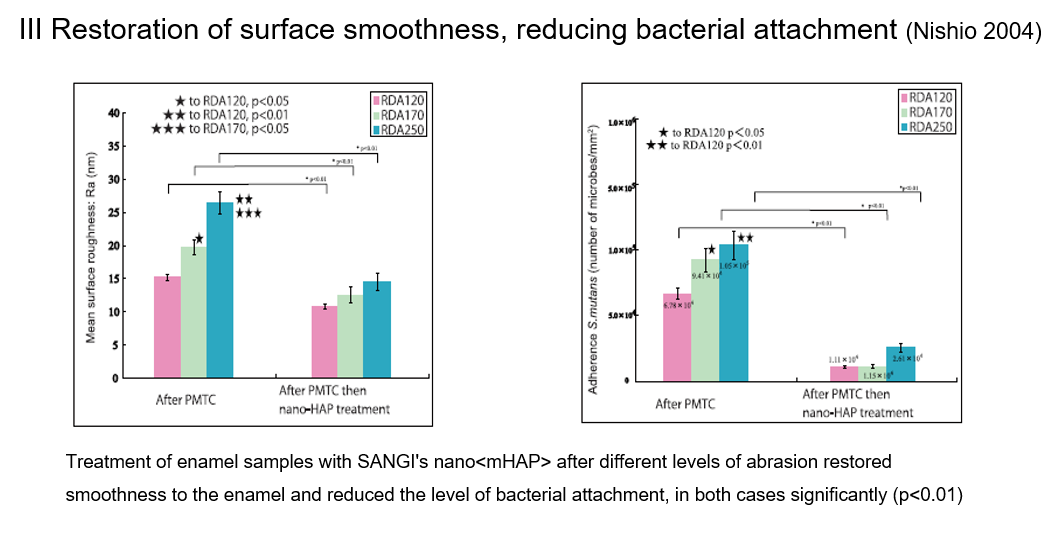SURFACE ENAMEL REPAIR
Early in vitro studies showed the reparative effect of SANGI's nano<mHAP> on microscopically damaged tooth surfaces. Tests were carried out using sound extracted human teeth, etched with acid to create artificial surface roughening, then brushed with or immersed in a solution of nano<mHAP>, or for comparison immersed in artificial saliva. Attachment of bacteria to the samples was also assessed. Results evaluated by scanning or field emission scanning electron microscopy (SEM, FE-SEM),1,2 showed that nano<mHAP> fills and repairs microscopic surface deficits, restoring the enamel almost to its original smoothness, and that this restoration of smoothness reduces bacterial attachment, thereby helping to protect against plaque.3



1.T.Ohashi et al, Remineralization of Artificial Caries Lesions by Hydroxyapatite, J Dent Hlth 41(2): 214-223, 1991 (Japanese language with English abstract)
2. K.Nishimura et al, Demineralized Enamel Surface Microstructure after Brushing Using Toothpaste Containing Medical Hydroxyapatite under FE-SEM Observation, J Jpn Stomatol Soc 48(3):199-210, 1999 (Japanese language with English abstract)
3. M.Nishio et al, A New Enamel Restoring Agent for Use After PMTC, J Dent Res 83:1920, Honolulu Abstracts 2004